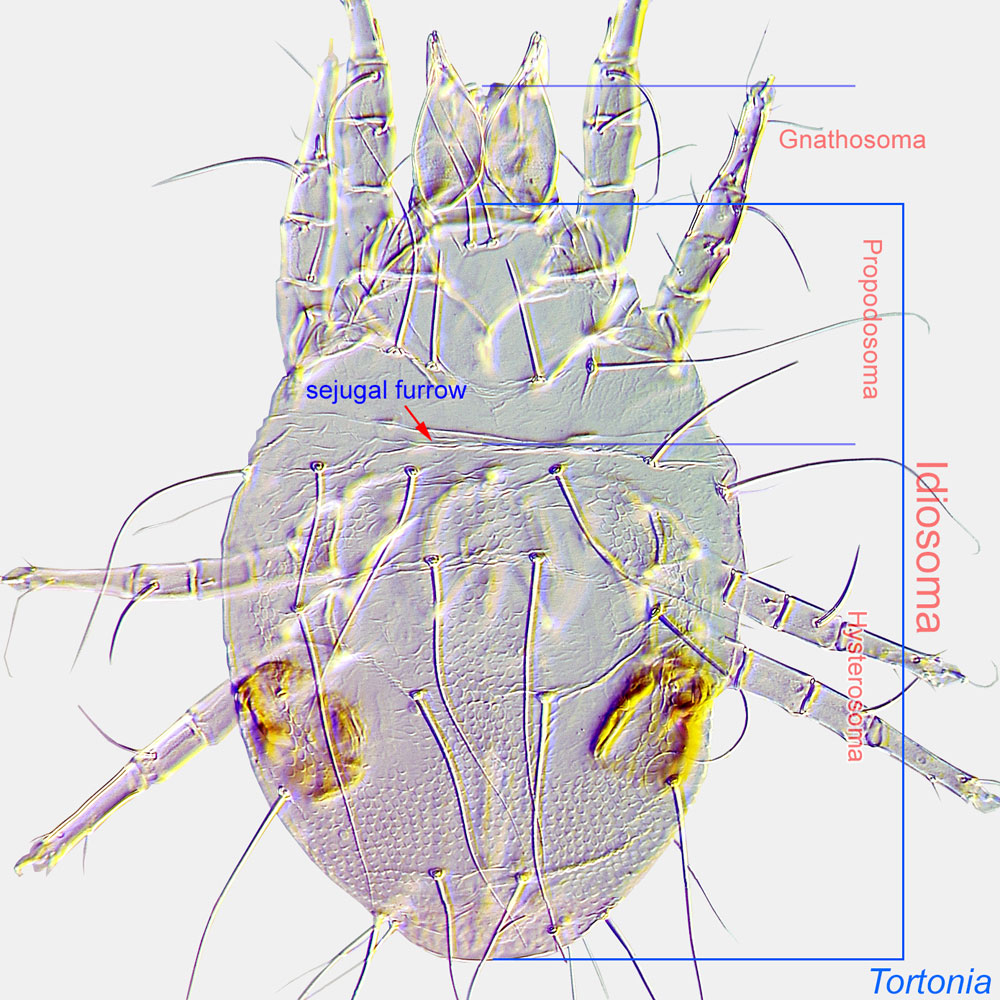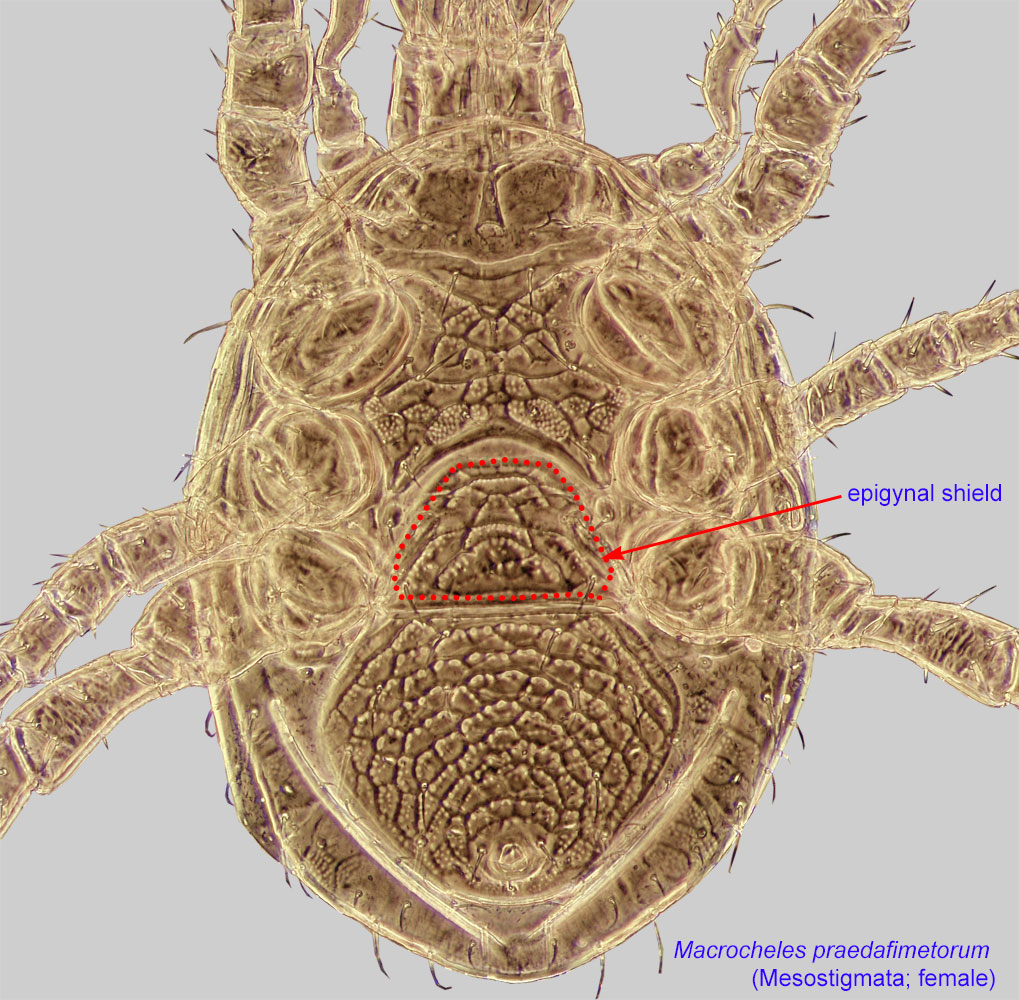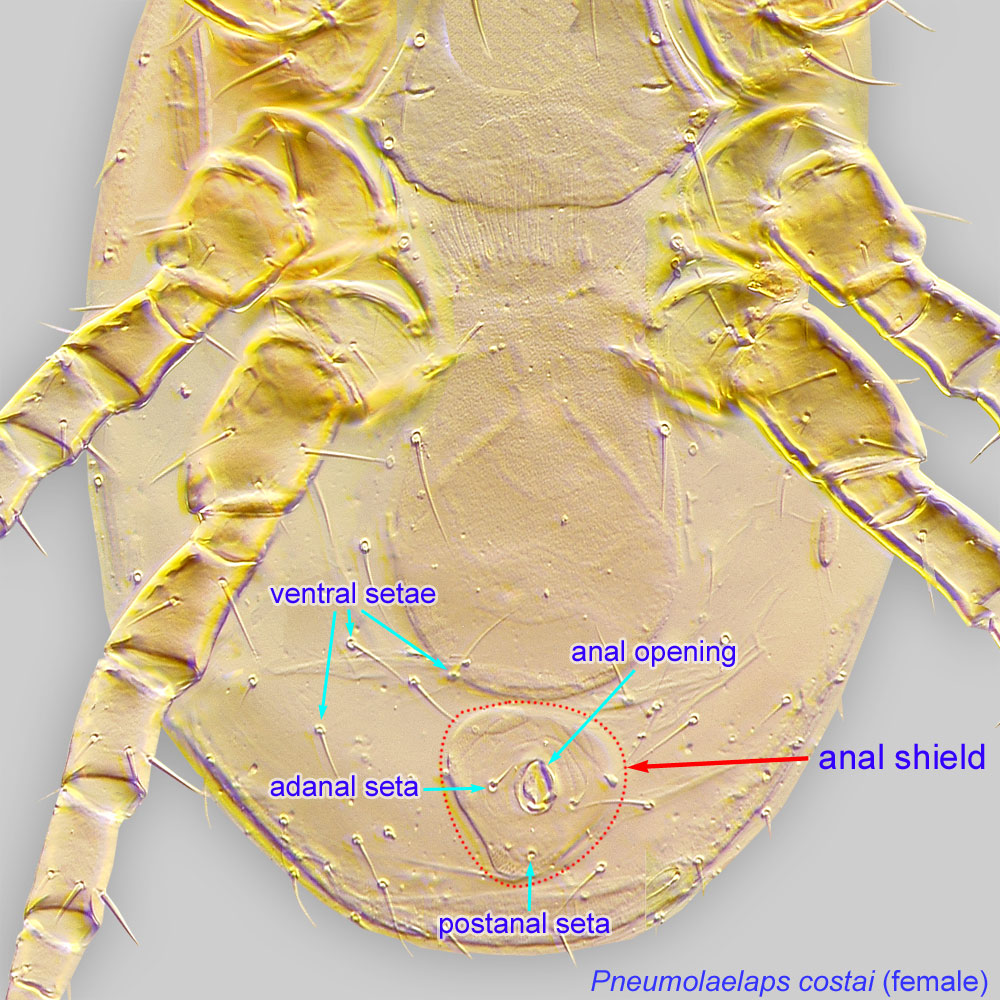lives in bee nests, but dispersal and feeding behavior are unknown
Eumellitiphis Turk, 1948Turk, 1948:
Turk, F. A. 1948. Insecticolous Acari from Trinidad, B.W.I. Proceedings of the Zoological Society of London.118: 82-125.
Superorder Parasitiformes » Order Mesostigmata » Suborder Monogynaspida » Hyporder Dermanyssiae » Family Laelapidae » Genus Eumellitiphis
Eumellitiphis mellitus Turk, 1948Turk, 1948:
Turk, F. A. 1948. Insecticolous Acari from Trinidad, B.W.I. Proceedings of the Zoological Society of London.118: 82-125.
Female: Some marginal setae of idiosomaidiosoma:
Body not including the gnathosoma.
 and legs with rounded or spatulate ends (Fig. 2). Epigynal shieldepigynal shield:
and legs with rounded or spatulate ends (Fig. 2). Epigynal shieldepigynal shield:
A shield protecting the female genital opening. Well-developed in Mesostigmata. Also known as epigynial shield.
 enlarged (Fig. 2). Distance between epigynal and anal shieldsanal shield:
enlarged (Fig. 2). Distance between epigynal and anal shieldsanal shield:
In Mesostigmata, a ventral shield bearing the anal opening and circumanal setae (adanal or postanal setae), but without any ventral setae or pores (lyrifissures) on it. If ventral setae are present on shield than referred to as a ventrianal shield.
 small (shields nearly touching each other) (Fig. 2).
small (shields nearly touching each other) (Fig. 2).
Male: Genitoventral and anal shieldsanal shield:
In Mesostigmata, a ventral shield bearing the anal opening and circumanal setae (adanal or postanal setae), but without any ventral setae or pores (lyrifissures) on it. If ventral setae are present on shield than referred to as a ventrianal shield.
 fused.
fused.
A dichotomous key is available in Delfinado-Baker and Baker, 1988Delfinado-Baker and Baker, 1988:
Delfinado-Baker, M. amp; E. W. Baker. 1988. New mites (Acari: Laelapidae) from the nests of stingless bees (Apidae: Meliponinae) from Asia. International Journal of Acarology.14: 127-136..
Neotropical and Oriental regions (Delfinado-Baker and Baker, 1988Delfinado-Baker and Baker, 1988:
Delfinado-Baker, M. amp; E. W. Baker. 1988. New mites (Acari: Laelapidae) from the nests of stingless bees (Apidae: Meliponinae) from Asia. International Journal of Acarology.14: 127-136., Turk, 1948Turk, 1948:
Turk, F. A. 1948. Insecticolous Acari from Trinidad, B.W.I. Proceedings of the Zoological Society of London.118: 82-125.)
stingless bees (Lestrimelitta, Geniotrigona, Lophotrigona, and Trigona)
permanentpermanent:
associated exclusively with bees or their close relative, wasps; cannot live without these hosts